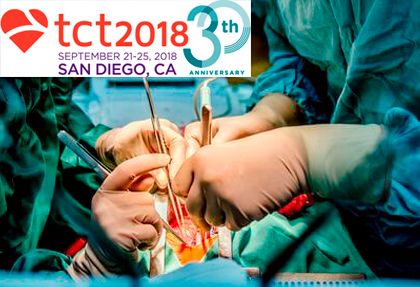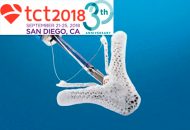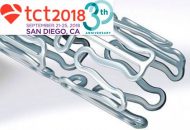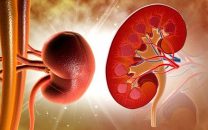Several studies (some of them recent, some of them not so much so) have compared left main coronary artery angioplasty and myocardial revascularization surgery. Combined, these works compose a large corpus of evidence, but follow-up has not gone beyond 5 years in any case. The main aim of this study (presented at TCT 2018 and published simultaneously…
TCT 2018 | COAPT: MitraClip in Patients with Secondary Mitral Regurgitation
The prognosis of patients with heart failure and mitral regurgitation secondary to ventricular dysfunction and dilation is guarded. Percutaneous mitral valve treatment of these patients may at least improve their symptoms. This study was conducted in 78 sites in the United States and Canada, and included patients with moderate-to-severe (3+) or severe (4+) mitral regurgitation who…
TCT 2018 | BIONYX: Durable Polymer-Coated vs. Ultrathin-Strut, Bioresorbable Polymer-Coated DES
This work, presented at TCT 2018 and published simultaneously in The Lancet, is the first randomized study comparing a zotarolimus-eluting stent with a new thin-strut structure and limited radiographic visibility (Onyx), and a bioresorbable polymer-coated sirolimus-eluting stent (Orsiro). Onyx was developed to improve visibility while reducing strut thickness. To that end, a dense platinum–iridium core and…
TCT 2018 | TriValve: Mitraclip for the Tricuspid Valve
The TriValve is a multicenter, international and retrospective study of multiple devices for percutaneous intervention to treat cardiac failure. This is a sub-analysis of patients receiving the most conventional of these devices: the MitraClip. The main points assessed by this study were all cause mortality, unplanned hospitalizations, functional class, the presence of peripheral edema, and…
TCT 2018 | SOLVE-TAVI: Self-Expandable vs. Balloon-Expandable Valves and General vs. Local Anesthesia in One Study
This prospective, randomized, multicenter study included 447 patients with severe aortic stenosis and intermediate or high surgical risk randomized in a 2×2 factorial design to general vs. conscious sedation with local anesthesia and also to receiving the Sapien 3 valve (balloon-expandable) vs. CoreValve Evolut R (self-expandable). Primary end point was a composite of all-cause mortality,…
TCT 2018 | REDUCE-FMR: Indirect Annuloplasty in Secondary Mitral Regurgitation
Prior studies such as the AMADEUS, TITAN or TITAN II have shown reduction of mitral valve regurgitation (MR) with the Carillon device. This sham-controlled randomized study tested the efficacy of this device in secondary mitral regurgitation. Primary end point was echocardiographic MR reduction (blind core lab) and secondary end point were hospitalization for cardiac failure,…
TCT 2018 | RESET: Everolimus DES vs. Sirolimus First Generation DES at Long Term
This study had published thrombosis and revascularization rates at one year after stenting, but today one year seems rather short, which is why this cohort was followed up for 5 to 7 years more, to be able to properly assess the differences between first and second generation DES. There were no significant differences a t…
TCT 2018 | PORTICO-I: One Year Follow-Up for the Self-Expandable Reposisionable Valve
This study was simultaneously presented at TCT and published at JACCE, and it aims at showing the one-year outcomes of this new TAVR device, though follow-up is at 5 years. Primary end point was all cause mortality and secondary end points included clinical and echocardiographic events. With a total 941 patients (82,4 ± 5,9…
TCT 2018 | RADIOSOUND-HTN: Testing Different Renal Ablation Techniques and Devices
The clinical efficacy of renal endothelial sympathetic denervation using both radiofrequency and ultrasound endoscopy in the treatment of hypertension has already been proven. This is the first work comparing different techniques and technologies used to this end, which warranted its publication in Circulation. Patients with resistant hypertension were randomized 1:1:1 to: 1) radiofrequency denervation of…
TCT 2018 | ULTIMATE: IVUS Guided DES Implantation for All Vessels, for All Lesions
Intravascular Ultrasound (IVUS) guided drug eluting stent (DES) implantation is associated with less adverse events compared against angiography guided stenting. This is especially clear for certain populations (with left main PCI as paradigmatic) but not so clear when dealing with all comers. 1448 all comer patients requiring DES stenting were randomized 1:1 to IVUS guided…









